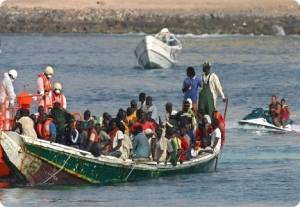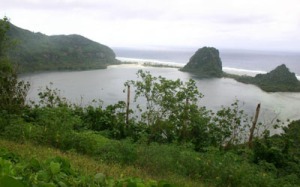Purpose: The purpose of this assignment is to provide us with insight and factual information about the different rends that have occurred in both our economy and the way that this in turn affects our own lives.
“No Impact Man”
Living no impact for a year, can it be done? (1)
“No Impact Man” is a documentary detailing the year in the life of Colin Beavan. A New York City resident, a writer and a newly found environmentalist, Beavan decides that for his next book idea, he wants, with his family, to live a year without causing ANY environmental impact. Along with his wife and daughter, he avoids using the elevator, traveling by car, bus, or train, buying food other than that of local farmer’s markets, producing waste, and using electricity for an entire year. The film highlights the successes and challenges to this no impact year. Beavan implores that living with no impact, or at least very little, is possible, if we as humans are ready to look at what we really need rather than what we “think” we need.
“No Impact Man” relates directly to previous class discussions. We spent time both in class and through assignments on ecological footprints. As stated by Withgott and Brennan, an ecological footprint is a “cumulative amount of land and water required to provide the raw materials a person or population consume and to dispose of or recycle the waste that is produced” (2). In a previous assignment, assignment 4, we discussed EFs in relation to ourselves and average EFs around the world. Many of us were shocked and dismayed at how many earths it would take if everyone lived our lifestyle. Beavan seeks to really highlight that point in an effort to make others reduce their own individual ecological footprint. Beavan harps on the amount of trash an average American produces. How avoidable is it? If we avoid certain things like drinking soda out of cans, water out of plastic bottles, coffee in disposable cups than we can reduce the amount of waste we produce. Using worm composts, one can recycle food waste into perfectly rich compost. All these methods can and will reduce one’s ecological footprint, leading to a less wasteful life, and a healthier one too (as Beavan lost 20 pounds over the year)! Beavan at one point says that he as one person cannot make that big of an impact, but it is his hope that through his actions, more people will join the effort. The average EF in the US is 9.5. This shocking number needs to be reduced and through collective individual efforts, Beavan hopes that people around the world can reduce their EFs.
Can one family make a difference? (3)
“No Impact Man” is a very well produced film in my opinion. It is humorous while also informative and presents the material in a way that is very gripping. It is easy to follow along, even for those who are not environmentally aware. However, not all agree. A.O. Scott of the New York Times remains “unconvinced that the cause of planetary rescue will be advanced very far by what is, in the end, an elaborate stunt. But as a professional writer, a New York husband and a man with a compost bin, an organic-produce fetish and a guilty conscience, I can’t, in the end (all appearances to the contrary), judge Mr. Beavan or this film too severely. Making an impact is easy. Making a difference is hard” (4). I, however, politely disagree. While yes, Beavan did this experiment as a subject for his upcoming book, but I think regardless of the intention, it brought about a positive change, and one that many of us could learn from. It was well acted because it was real and that’s more than a lot of movies these days can say.
Graph from Gapminder displaying the relationship between life expectancy and average income from 1900 -2009 (5)
The website www.gapminder.com is a website that examines the relationships between different variables and there effects on one another over different time periods. I have chosen to focus on my home country, The United States. The two variables that I feel are the most important to be considered for the US are the life expectancy and the income per person. In the United States in the 1900’s the average life expectancy was 49 and the average income was 6,624. This is drastically different from both the life expectancy and the average income in 2009. In 2009 the life expectancy was 79 while the income per person was 41,256.
The two variables that I have chosen to examine are the life expectancy versus the average income. Today, in 2009 as the average income increases so does the life expectancy. The relationship is positive. Between the years 1900 and 2009, it is evident that there have been serious changes to both of the variables. These changes could be dependent on many historical/economical and political events that have occurred in the United States. From the 1900’s the average income per person is increasing every year until the 1920’s, in the 1920’s there is a decline for the income, from there on it remains the same until 1950s. This could be related to the fact that the Great Depression occurred in the 1920-40’s. This could have greatly hindered the progression of income.
6) The great depression, millions were without work
7) WWII American soldiers raise a victory flag
Also during these years WWII was surfacing and then occurring. This could provide an explanation for why the life expectancy rates also remained the same for many years along with the average income. The war took many lives, and significantly strained the economy as the US was providing aid to many of the other countries, and also spending a lot of money on warfare. After the 1950s both variables began to increase again. During the years between the 1950’s and 2009 many advances in technology were created particularly in medications. Medications were found to treat Hepatitis A, and also penicillin began to be used. This was able to boost both the average income and the life expectancy for most. In the 1970’s the average income was 23,346 and the life expectancy was 71, representing a very large increase from the 1920’s.
8) Doctors using new technology to operate on patients
In conclusion we are able to see how much of a relationship there is between the economy, our usage of the world’s resources and the effects that all of these different factors have on sustaining human life!
Partners: Amy and Sasha
Citations
1) Youtube. “No Impact Man-Official Trailer” (Jul 29 2009). Retrieved May 19, 2011 fromhttp://www.youtube.com/watch?v=Z9Ctt7FGFBo
2) Withgott, J. & Brennan, S. (2010). Environment: The science behind the stories. 4th Ed. San Francisco: Pearson Education.
3) No Impact Man. “Ridiculously Conspicuous Unconsumption” (Jan 13, 2009). Retrieved May 18, 2011 from http://noimpactman.typepad.com/blog/2009/01/ridiculously-conspicuous-unconsumption.html
4) Scott, A.O. (2009). Portrait of a Marriage: Eco-Geeks Unplugged. Retrieved May 19, 2011 from http://movies.nytimes.com/2009/09/11/movies/11impact.html
5) Gapminder (n.d.). The Wealth and Health of Nations. Retrieved May 17, 2011 fromhttp://www.gapminder.org/world/#$majorMode=chart$is;shi=t;ly=2003;lb=f;il=t;fs=11;al=30;stl=t;st=t;nsl=t;se=t$wst;tts=C$ts;sp=5.59290322580644;ti=2009$zpv;v=0$inc_x;mmid=XCOORDS;iid=phAwcNAVuyj1jiMAkmq1iMg;by=ind$inc_y;mmid=YCOORDS;iid=phAwcNAVuyj2tPLxKvvnNPA;by=ind$inc_s;uniValue=8.21;iid=phAwcNAVuyj0XOoBL_n5tAQ;by=ind$inc_c;uniValue=255;gid=CATID0;by=grp$map_x;scale=log;dataMin=295;dataMax=79210$map_y;scale=lin;dataMin=19;dataMax=86$map_s;sma=49;smi=2.65$cd;bd=0$inds=;example=75
6) The Great Depression. Retrieved May 17, 2011 fromhttp://www.chrisstockdale.com/images/img-great-depression—unemployed-chicagoans.jpg
7) American WWII soldiers. Retrieved May 17, 2011 from http://mail.csisd.org/~ow/FOV1-0001D14E/S0430D27D.0/flagraising.jpg
8) Doctors. Retrieved May 18, 2011 from http://blog.lib.umn.edu/moore144/ahcarchives/images/img0039.jpg
















